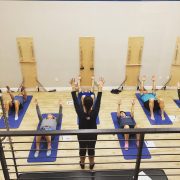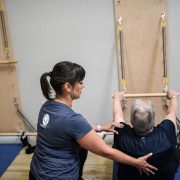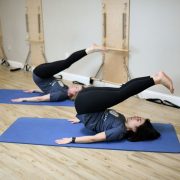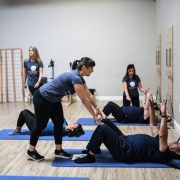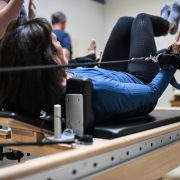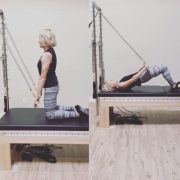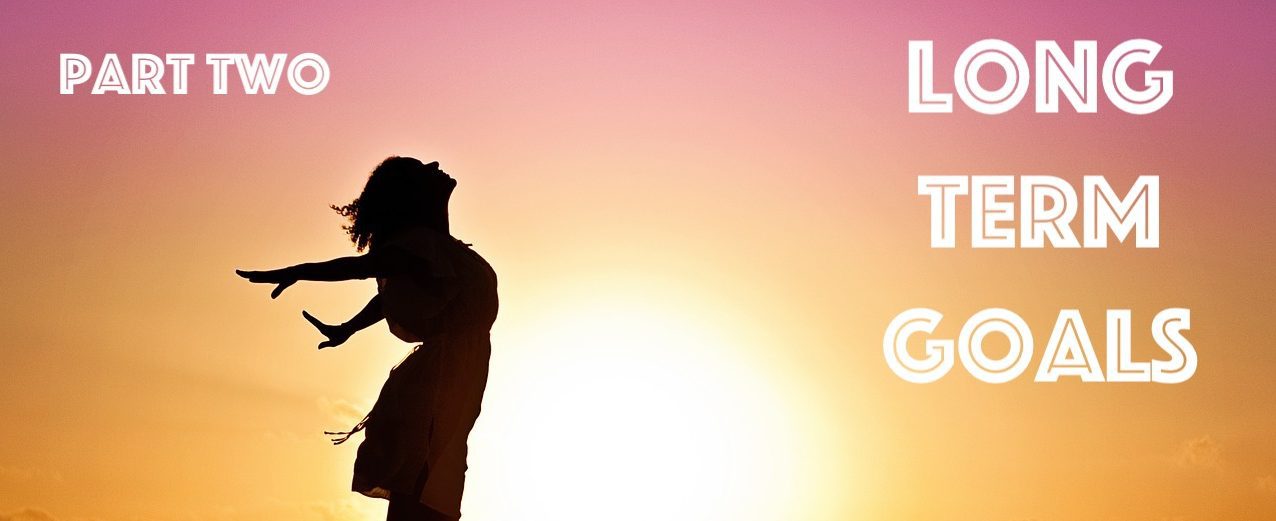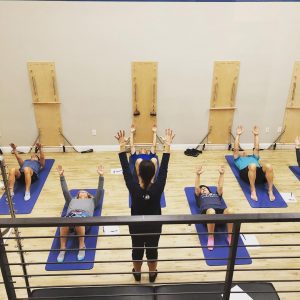Five Ways Adding Pilates to your Life will Enhance your Fitness.
Pilates has been around for about 100 years, and it still amazes me how many people have NOT heard of this incredible exercise method. It was first created by Joseph Pilates and initially gained popularity among the dance community as a way to recover from and prevent injuries. But you don’t have to be a dancer to practice Pilates — or enjoy the benefits.
We’ve been incorporating Pilates into our physical therapy practice for the last 10 years and it’s been transformational for both our clients AND our practice.
Pilates is a full body strengthening system that emphasizes breath, precision, coordination, and core strength. It helps our clients connect to their bodies in a way that they haven’t been able to achieve with traditional strengthening methods. Most of my clients are well into their 50’s, 60’s, and 70’s, and they love Pilates because it helps them have more energy, better balance, improved strength, and more mobility. It allows them to participate in all the activities they love with more ease, and most importantly, significantly decreases their risk for injury.
Here are five reasons why I personally love adding Pilates to any fitness routine, and why you should consider adding it to yours too!
1. Pilates helps prevent back pain.
Once you hit 40, your risk of back injury starts to climb. We specialize in back pain, so see a lot of folks with this problem in our office. They’ve often worked with traditional physical therapists or chiropractors in the past to successfully get rid of back pain in the short term, but it keeps coming back. And our clients want it gone for the long-term. A regular practice of Pilates is a safe and sustainable way to help keep your back pain-free. It focuses on core strength but is also a well-balanced exercise system. Full body strength and balance is a critical component for life-long back health, and it is not always addressed in traditional back rehabilitation programs or treatments.
2. Pilates strengthens your whole body, not just your core.
One of the keys to truly enhancing your fitness is what I call “balanced strength.” That’s when each part of your body works together to produce the right amount of force, at the right time, to do your favorite activity in the most efficient way possible. Efficiency means you’ll be able to do it for longer and with more ease. We see lots of strong people in our office, and they can’t understand why they’re in pain. It’s entirely possible to be “strong,” but still have certain muscles working harder than others. This creates an imbalance, which eventually leads to problems. Pilates emphasizes full body strength that is coordinated, which helps promote balanced strength throughout your body and leads to fewer injuries over time.
3. Pilates helps you get more flexible and mobile.
Do you stretch your hamstrings every single day and get frustrated because they’re still tight? It’s probably because you’re not stretching the right way. What I love about Pilates is that it stretches your body in a dynamic way – with movement – so that muscles lengthen the right way. The days of statically holding a stretch for 30 seconds are long gone. Plus, mobility is extremely important for strength. Muscles work better when your joints move fully and freely. “Mobility before stability” is a phrase you hear daily in our office. And Pilates is a great way to get your joints and muscles mobile while ALSO promoting stability.
4. Pilates puts minimal stress on your joints.
Aging is a real thing, and along with it comes arthritis. The key to combating arthritis is optimizing the area around the affected joint or joints. When you have good mobility, and balanced strength, you have less compressive forces around your joints. Arthritis doesn’t like compressed, crowded joints. So when you strengthen and stretch your whole body in a good, balanced way – arthritis becomes less painful and stiff. Pilates helps with all this and doesn’t cause any added stress on your joints. There’s a good reason you see lots of folks in their 60’s and 70’s enjoying our classes.
5. Pilates trains your nervous system.
Huh? Is that even a thing? Yes it is – and it’s almost ALWAYS the missing link for people who feel stuck, or can’t seem to get beyond a certain point in their fitness. It can also be the reason why an activity you’ve been doing “for years” suddenly becomes problematic or painful. If you don’t train your nervous system, it gets lazy, and compensations will develop in your body. Compensations lead to problems when unchecked. Since Pilates is a mind-body exercise, it helps to keep the communication between your brain and your muscles fresh. Pilates emphasizes precise and coordinated movements, which enhance and reinforces this connection. In other words, your nervous system can’t get lazy when you do Pilates!
If you’re not yet incorporating Pilates into your fitness or rehab routine — what are you waiting for?
As a specialist physical therapist it’s my go-to exercise system for folks over 40 and my favorite way to help people keep their back pain gone. We’re actually re-launching our signature 8 week program, Pilates 101 ! Pilates 101 is completely dedicated to folks who are new to Pilates, or who have back pain and want to learn how to develop a safe core-strengthening routine. If you want more information, just click here!

